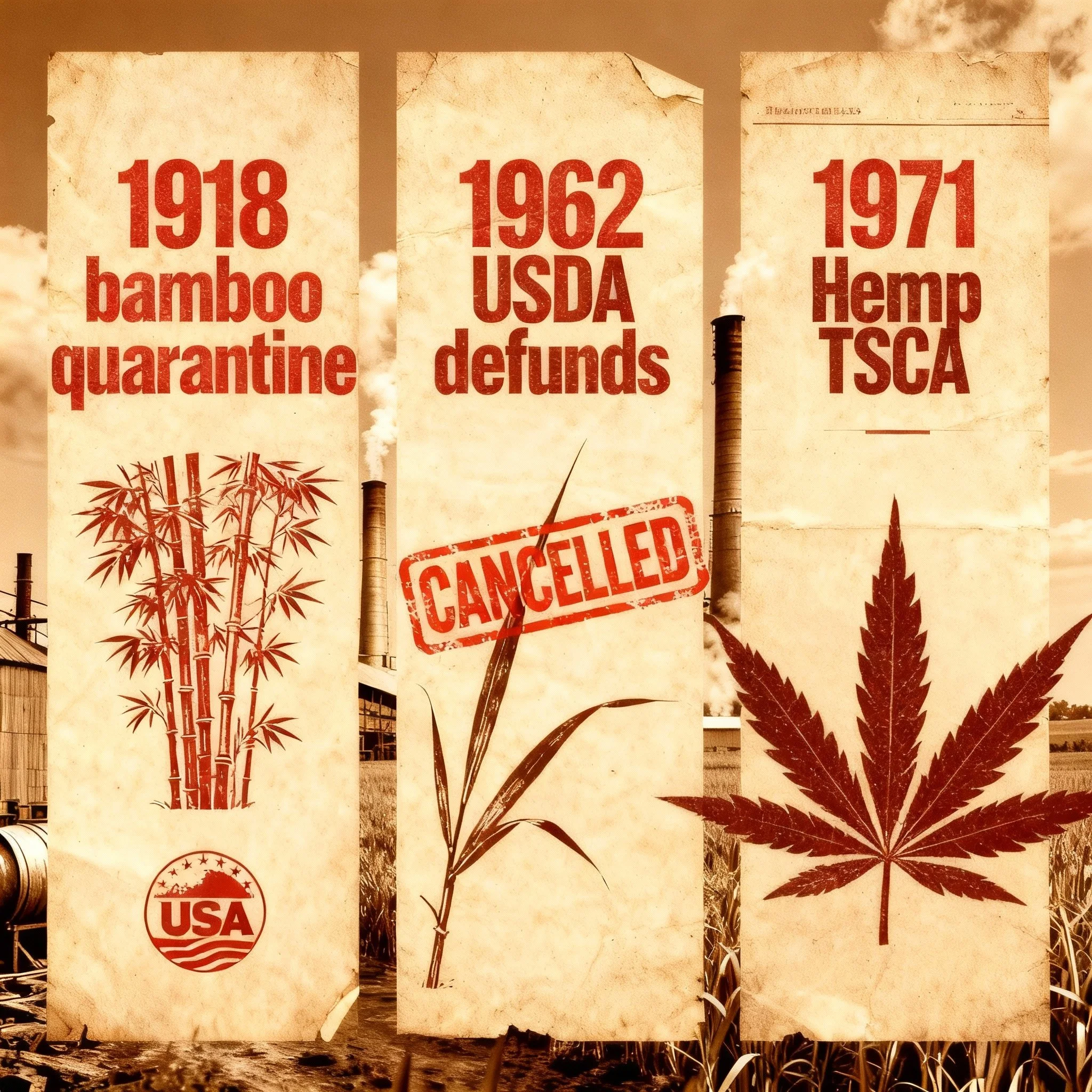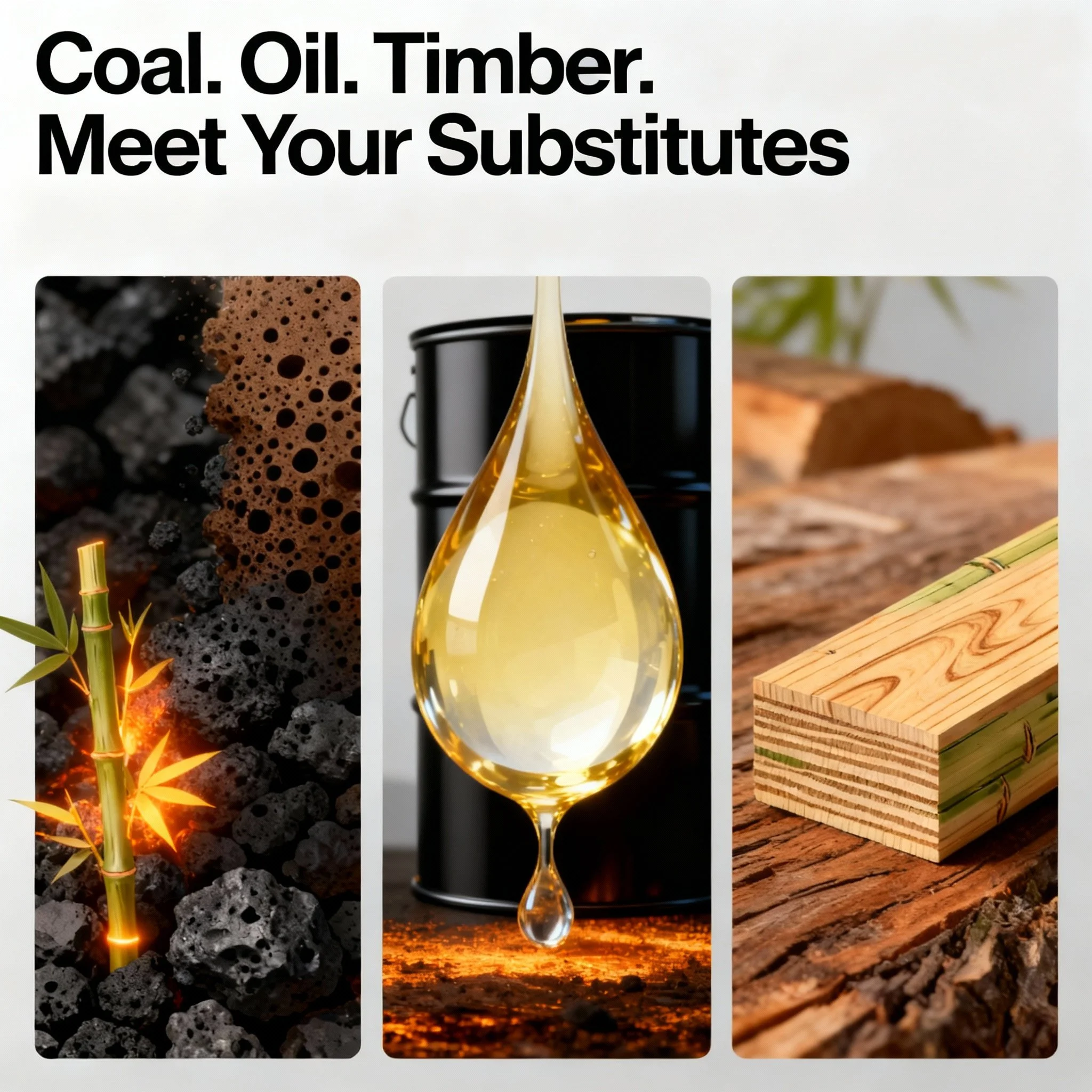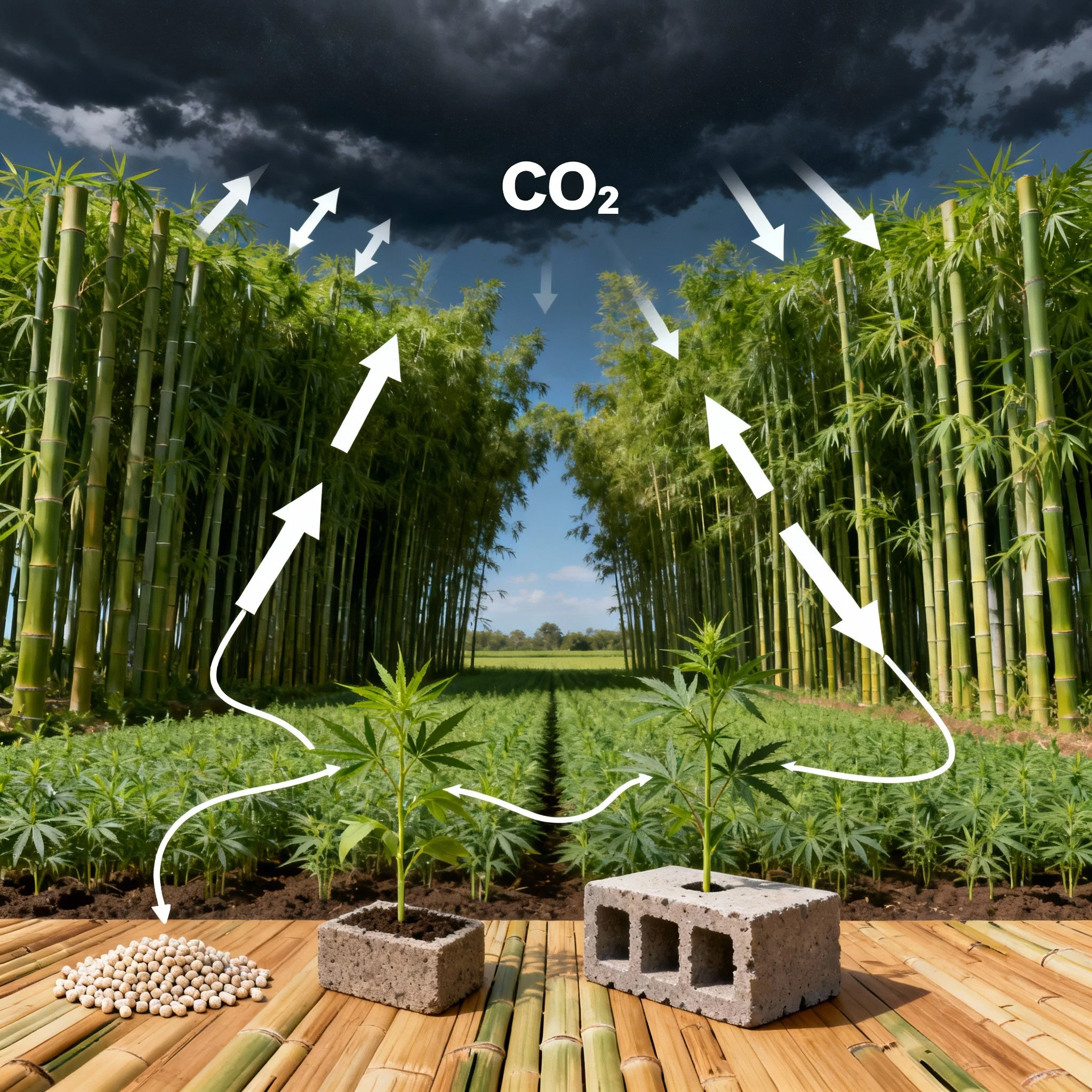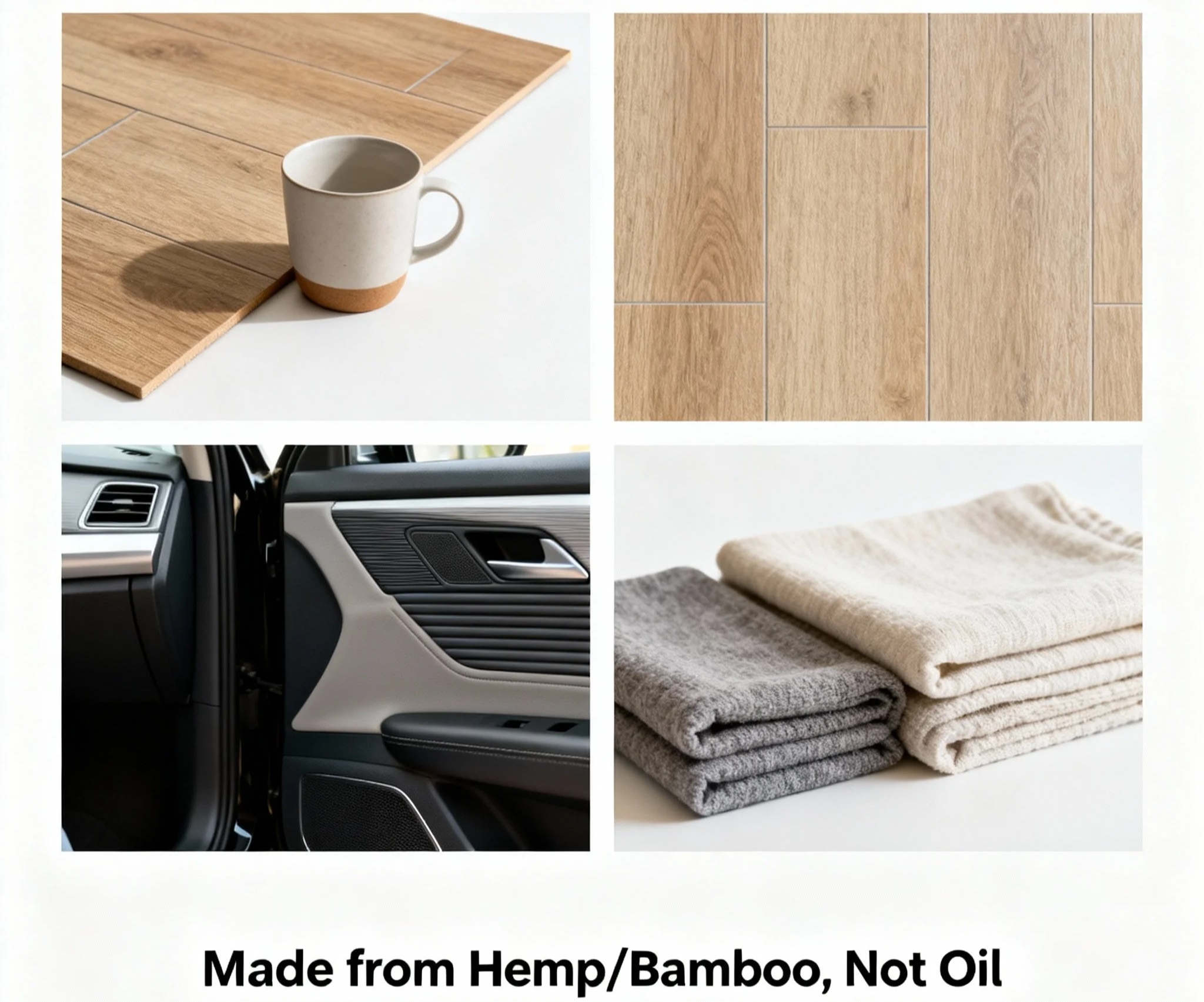Bamboo & Hemp: Two Grasses Built to Heal What Petrochemicals Broke
Every World Bamboo Day, people share pretty photos of groves and panda snacks. Nice, but it misses the real story. Bamboo and hemp are not just plants. They’re the twin antidotes to the petrochemical era and their century-long suppression was no accident.
1️⃣ 1918: Bamboo Quarantined to Protect Timber
Long before “plastic” was a household word, U.S. timber barons already feared bamboo.
In 1918, the Department of Agriculture slapped imported bamboo onto a federal quarantine list—officially to stop plant pests, unofficially to block a rival that:
Matures in 5–7 years (vs. 20–60 years for pine or oak),
Shoots up three feet a day, and
Once mature, can be selectively harvested every single year for decades with no replanting.
For a timber industry built on slow growth, bamboo was an existential threat.
2️⃣ 1962: USDA Pulls the Plug
Even the modest federal bamboo research that survived the quarantine couldn’t escape industry pressure.
By 1962, the USDA quietly defunded and shut down its last bamboo research program—just as plastics and chemical fertilizers were locking in their dominance. With no federal support and import restrictions still in place, commercial bamboo development in the United States effectively flatlined.
3️⃣ 1971: Hemp Criminalized
Half a century later, hemp got its own takedown.
The Controlled Substances Act of 1971 lumped industrial hemp—chemically incapable of producing a high—together with marijuana. Decades of propaganda made sure the nuance never stuck.
Different excuses, identical outcome:
Bamboo buried under “pest” rules and research defunding.
Hemp buried under “drug” hysteria.
Both were erased from industrial growth curves just as oil, plastics, and chemical fertilizers locked in their profits.
4️⃣ Confusion as a Strategy
Ask a homeowner why they fear bamboo and you’ll hear it: “It’ll take over the yard!”
That fear comes from running bamboo, a handful of aggressive species. Clumping bamboo, by contrast, stays in tidy clusters—perfect for construction and carbon capture.
It’s the same one-note smear that crippled hemp: “It’s marijuana.” Industrial hemp contains only trace THC, but fear paid better than facts.
Confusion became policy. Policy became profit—for petrochemicals and timber.
5️⃣ Still Technically Illegal
Hemp clawed its way back to federal legality in the 2018 Farm Bill.
Bamboo has never had its redemption arc.
Today it’s still treated as a regulated pest in many states. USDA import quarantines and state-level restrictions make large-scale cultivation and processing a bureaucratic maze.
6️⃣ Complementary Superpowers
These two grasses were never rivals; they’re perfect partners:
Bamboo – The Green Steel and Beyond
Structural timber, flooring, engineered composites.
Extraordinary carbon sequestration—some species lock more CO₂ per acre than most forests.
Produces biochar and biomass energy strong enough to replace coal in power and steel production.
Hemp – The Plant That Outperforms Oil
Long bast fibers for textiles and advanced bioplastics.
Seed oil and cellulose ideal for next-generation biofuels and bio-based chemicals that can replace petroleum feedstocks.
Silica-rich hurds for hempcrete and other bio-silicate materials.
Shared Strengths – Timber’s Better Replacements
Both supply strong, fast-renewing fiber that can outperform slow-growth timber in construction, packaging, and paper.
Both can replace the toxic petrochemicals in everyday products, from plastics and adhesives to solvents and coatings, cutting the chemical load that ends up in our bodies and waterways.
7️⃣ Demand That Heals
Here’s the twist that petrochemical lobbyists never wanted to admit:
When managed responsibly, growing demand for hemp and bamboo doesn’t degrade ecosystems—it repairs them.
Bamboo’s root systems stabilize soil and prevent erosion while pulling CO₂ out of the air and locking it into durable goods.
Hemp remediates contaminated soil, absorbs heavy metals, and improves soil structure for future crops.
Every ton of bamboo or hemp that displaces a ton of fossil-fuel plastic or chemical-treated timber is a double win: it cuts emissions and actively restores landscapes.
8️⃣ The Real Competition
A few hemp advocates still talk about “competing with bamboo.” That’s replaying the petrochemical industry’s old divide-and-conquer strategy.
The real opponent isn’t another plant—it’s the entrenched fossil-fuel and timber economy that engineered their disappearance in the first place.
💡 World Bamboo Day isn’t a feel-good hashtag.
It’s a yearly reminder that the materials capable of replacing coal, oil, timber, and toxic chemicals were sidelined on purpose—and that their comeback is nothing less than planetary triage.
Bamboo can replace coal. Hemp can replace oil. Together they can replace timber and the everyday petrochemicals that poison our products and our planet.
9️⃣ Homegrown, High-Tech, Climate-Positive
Bamboo and hemp don’t need to be imported from some far-off rainforest or foreign lab. Both can be grown right here in the United States—from the Southeast’s warm, humid belt to the Midwest’s fertile plains. That means jobs, rural investment, and supply chains that aren’t hostage to overseas markets.
And they’re not just “green” replacements; they’re climate bonuses:
Massive carbon sinks – Both lock CO₂ into long-life products and regenerate annually, giving us the rare double win of renewable production and atmospheric drawdown.
Soil repair – Hemp pulls heavy metals and toxins from abused farmland; bamboo’s rhizomes stabilize soil and prevent erosion.
The research frontier is just as exciting. Both plants are being explored for:
battery and supercapacitor components (hemp-graphene, bamboo-carbon structures),
solar panel substrates and next-gen bio-based photovoltaic materials,
advanced bioplastics and bio-composites that out-perform petroleum plastics.
Bottom line: These aren’t boutique crops; they’re the raw feedstock for the next energy and materials revolution. Growing them domestically doesn’t just cut emissions—it builds the very technologies that will help cool the planet.
When demand for these plants rises under responsible stewardship, it doesn’t just fuel an economy—it heals the very systems we’ve broken.
#WorldBambooDay #Hemp #Bioeconomy #Bioplastics #CarbonSequestration #SustainableMaterials #RegenerativeEconomy #EvolutionMine
Read the full story in the book.
Evolution Mine: The Industrial Evolution—the blueprint for breaking the petrochemical playbook and building a regenerative economy.
👉 Buy on Amazon




